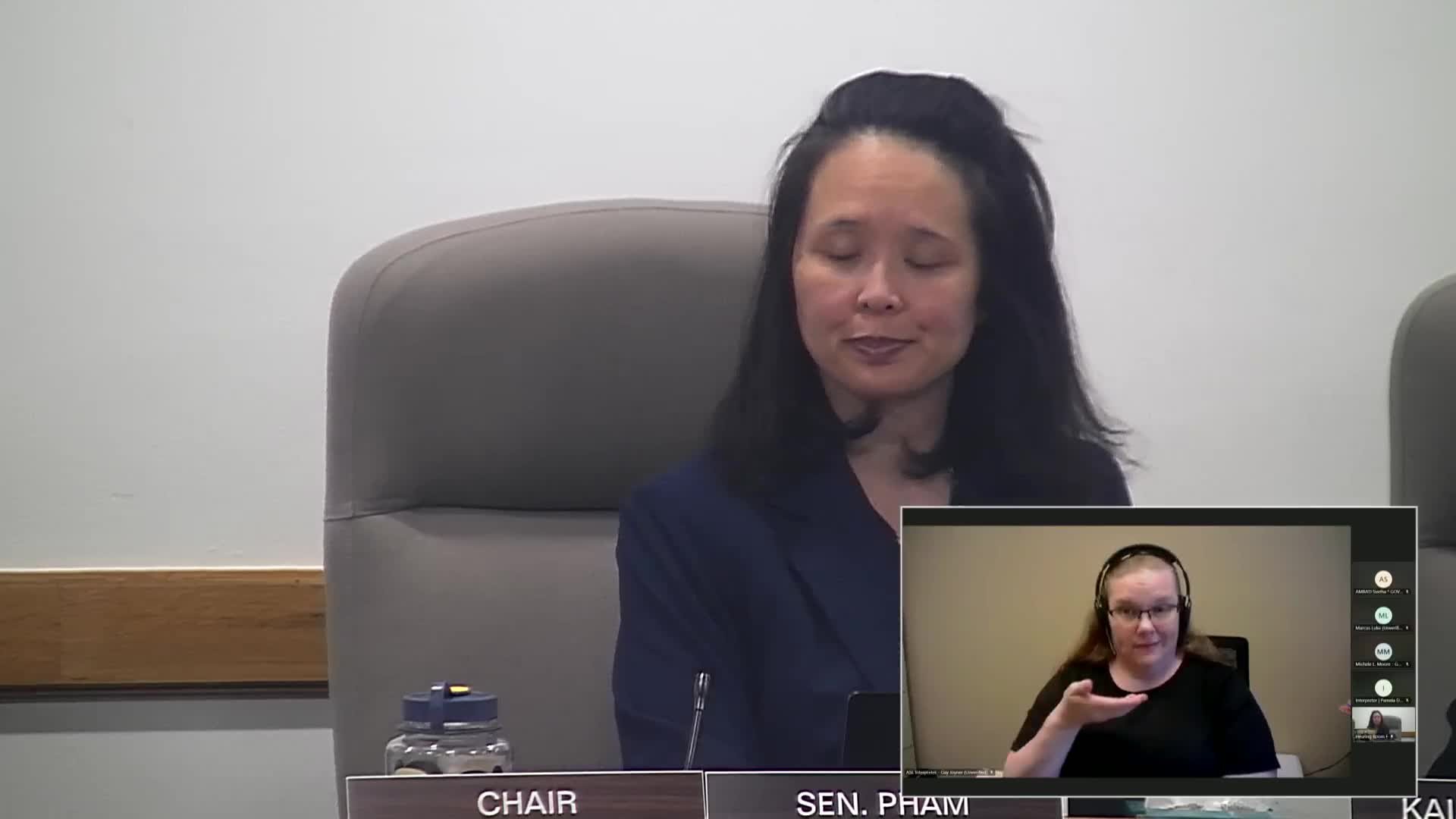Senate committee hears public testimony on bill to codify OHCS flex lending
April 28, 2025 | Housing and Development, Senate, Committees, Legislative, Oregon
This article was created by AI summarizing key points discussed. AI makes mistakes, so for full details and context, please refer to the video of the full meeting. Please report any errors so we can fix them. Report an error »

House Bill 3035A would place Oregon Housing and Community Services’ flex lending authority into statute and update several definitions governing residential loans, agency officials told the Senate Housing and Development Committee during a public hearing April 28.
Nathan Clark, government relations and legislative coordinator at Oregon Housing and Community Services, and Scott Shaw, Assistant Director of Homeownership Lending at OHCS, described the bill as clarifying OHCS authority to offer flexible mortgage products, expanding the meaning of ‘‘residential loan’’ to include refinancing and removing a limit on how much can be borrowed to repair or improve a single‑family home for low‑income households. Clark said, “In short, House Bill 3,035 codifies flex lending.”
The bill ties the new language to OHCS’ lending history. Clark and Shaw told the committee that OHCS’ Oregon Residential Bond Loan Program was the agency’s first mortgage lending program in 1977 and that the agency has developed flex lending products since 2018, including the Next Step product launched in March 2023 and First Home in November 2024. They said the U.S. Department of Justice has recommended putting flex lending into statute as the program matured. The presenters told the committee the bill has no revenue impact and only minimal fiscal impact.
Committee Chair Pham opened and closed the public hearing after the OHCS presenters; no members of the public had signed up to testify. No formal action on the bill was taken during the April 28 meeting.
Background and details offered to the committee focused on the policy intent to expand access to homeownership for lower‑income Oregonians through mortgage products that are not tied to private activity bonds and that provide more programmatic flexibility. The presenters emphasized that OHCS operates “not in competition with but in collaboration with lenders in the private sector,” and that flex lending was developed to lower rates and better terms for lower‑income borrowers while reducing agency risk.
The record before the committee did not include statutory citations or ordinance language beyond the bill caption, and committee staff reported a minimal fiscal note. The hearing was informational and closed with no public testimony and no committee questions that led to further action that day.
The committee later proceeded to other agenda items.
Nathan Clark, government relations and legislative coordinator at Oregon Housing and Community Services, and Scott Shaw, Assistant Director of Homeownership Lending at OHCS, described the bill as clarifying OHCS authority to offer flexible mortgage products, expanding the meaning of ‘‘residential loan’’ to include refinancing and removing a limit on how much can be borrowed to repair or improve a single‑family home for low‑income households. Clark said, “In short, House Bill 3,035 codifies flex lending.”
The bill ties the new language to OHCS’ lending history. Clark and Shaw told the committee that OHCS’ Oregon Residential Bond Loan Program was the agency’s first mortgage lending program in 1977 and that the agency has developed flex lending products since 2018, including the Next Step product launched in March 2023 and First Home in November 2024. They said the U.S. Department of Justice has recommended putting flex lending into statute as the program matured. The presenters told the committee the bill has no revenue impact and only minimal fiscal impact.
Committee Chair Pham opened and closed the public hearing after the OHCS presenters; no members of the public had signed up to testify. No formal action on the bill was taken during the April 28 meeting.
Background and details offered to the committee focused on the policy intent to expand access to homeownership for lower‑income Oregonians through mortgage products that are not tied to private activity bonds and that provide more programmatic flexibility. The presenters emphasized that OHCS operates “not in competition with but in collaboration with lenders in the private sector,” and that flex lending was developed to lower rates and better terms for lower‑income borrowers while reducing agency risk.
The record before the committee did not include statutory citations or ordinance language beyond the bill caption, and committee staff reported a minimal fiscal note. The hearing was informational and closed with no public testimony and no committee questions that led to further action that day.
The committee later proceeded to other agenda items.
View full meeting
This article is based on a recent meeting—watch the full video and explore the complete transcript for deeper insights into the discussion.
View full meeting
